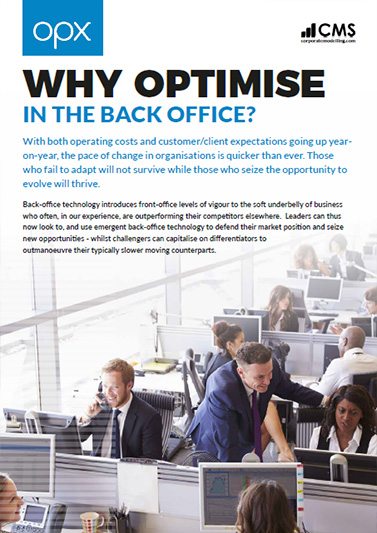Digital transformation is a complex process which requires buy-in across the entire enterprise, but especially at the level of CEO and C-suite.3 According to Branislav Kohl, CEO of Bratislava, Slovakia-based DataConcept, the process of digital transformation starts with a good internal understanding of the benefits it will bring to the business. Achieving this understanding requires a change in mindset, which makes it a key requirement in creating a smooth and efficient digitalization strategy.
“Because of that, it all lays on the top management. Each C-Level executive plays a decisive role in the implementation process. They will be the main drivers of the transformation, and therefore, should be fully on board,” explained Kohl.
The Role of CEOs and C-Suite in Digital Transformation
As CEO of Arlington, Va.-based Jibestream, Chris Wiegand has worked with some of the world’s largest brands on digital transformation initiatives in the indoor mapping and intelligence space. He described digital transformation as a process of crossing the chasm from formerly siloed processes to a new holistic digital ecosystem of technology to help reach organizational goals. The value proposition of this shift is a promise of increased productivity and optimized workplace efficiencies.
“Compared to the ‘old world’ of traditional models, the digital age not only allows for a myriad of technologies to work more seamlessly together, it also creates a host of new valuable workplace data leading to a better understanding of how space is being utilized that can be used to ensure maximum productivity while driving down costs,” Wiegand said. The importance of successfully adopting a digital workplace comes down to the organization gaining a competitive edge and achieving their goals.
He added that while there is a strong need for buy-in across the organization, the importance this transformation plays for the enterprise means the articulation and strategy for the implementation must come directly from the CEO and other C-suite executives. Without this level of involvement, organizations risk failing to realize the full potential and may make costly mistakes.
IT Leaders’ Contributions to Digital Strategy
Key to digital transformation is moving from on-premises to the cloud said Maria Olson, VP of global and strategic alliances at San Jose, Calif.-based JetStream Software. This switch opens up access to dozens of different technologies which comprise the backbone of digital workplaces. Moving from an on-premises model to a cloud model means working with four new constituents and defining the roles, responsibilities and priorities of each person involved. These four constituents are:
- IT Organization — Defines the scope of digital transformation projects.
- Cloud service providers — Ensures service consistency in cloud-driven digital workplace.
- Systems integrators — Share expert perspective and guidance.
- Systems and software vendors — Ensure technology fits the need.
“Teams with a greater degree of role diversity tend to create more innovative solutions and achieve greater success in reaching goals. Beware, if there is fundamental ambiguity about ownership and accountability, that’s a red flag;” she said. Ensuring everyone understands their role in the process and shares a strong overall agreement on each participant’s unique mission statement is critical here.
This is where IT leadership must step up. “From the initial planning phase, IT leaders are responsibility for bringing together the contributors according to the ‘three P’s’: project, people and process,” Olson said. The project definition encompasses the schedule, success criteria, risk factors and operational requirements. In identifying the people who will contribute, it’s important to go beyond role definition and any gaps in expertise. It’s also important to consider contingencies in the event that a participant leaves the project prematurely.
IT Adaptability Is Critical
David Rabin, a digital transformation expert and VP of global commercial marketing at Lenovo, said that for years now, the IT department controlled the technology stack with an iron fist. Those days are gone as businesses embrace the potential of digital transformation. Business executives and business unit leaders now control the demands of what they need to run their business, and they expect IT to be able to deliver the right technology. For example, sales organizations might procure CRM software, line-of-business owners may demand specific technology for their needs and facilities might need new collaboration hardware as they revamp their real estate footprint.
“Where other business units are leading the charge by putting new requirements on IT, it’s IT’s job to have the answers and be able to integrate new tools into their business. Specific to a digital workforce, executives and managers are recognizing that technology has enabled workers to live and work anywhere. In essence, work in not a location, but a function,” he said.
To that end, it’s imperative IT departments understand the tools available to facilitate a collaborative environment no matter where the worker resides. Be it smart office collaboration tools, digital displays or even noise-cancelling headsets as hoteling becomes more prevalent, IT must adapt.
The Role of Managers
Business leaders and managers play an instrumental role in transformation efforts. Transformation begins as team managers deploy IT-sponsored systems within their groups. User adoption creates the common thread across a company as efforts ramp up.
Michael Edelberg, co-founder and CEO of Lake Forrest, Ill.-based Arcsec Digital said no matter what is being implemented, managers must ensure that each employee understands why the company is going in this direction. When employees understand why change is taking place, they are more likely to be converted into an ambassador of any given product or initiative, which in turn leads to teams collaborating in a more productive way.
“If the rank and file aren’t on board, bad practices begin. Shadow IT, unhappy employees, and much more are a disaster that the C-suite usually won’t know about before it’s too late,” Edelberg said.
HR Leads Transformation Communications Programs
Managers also play an instrumental role in spreading the digital transformation message across the enterprise. Tim Christensen, vice president of product and engineering at San Francisco-based SocialChorus, defined digital transformation as how well your business adapts to the changes in expectations, norms, and demands driven by technology forces outside a company’s control. Given the millions of hours and dollars spent on a digital transformation, for it to be a successful it must be a company-wide initiative with the digital workplace (a subset of the digital transformation) transforming at the same time.
However, he noted the dynamic is changing around who is responsible for the digital workforce. Instead of relying on ineffective and slow channels like cascade communications, he said success requires direct, immediate and personal communications. Because communications are the key link that connects employee experience, company-wide business goals, and digital transformation, HR and internal communications must work with all departments and step up to facilitate transformation across the board.
“Companies need to have a communications program that pulls everything together. And it can’t be an afterthought, it must be a fully integrated campaign. HR and communicators should think like digital marketers, adopting skills like employee journey mapping. Workers find it unacceptable to learn about company updates like PR nightmares through their personal social account rather than a trusted company source,” he said.
Workers expect to be kept in the know about what they need every day to do a better job. Because of this, communications and HR leaders need to engage with every department to ensure changes are clearly communicated, needs are being met and everyone is kept in the loop.
By







 Thank you for your interest in our whitepaper. You can download AI Driven Forecasting for WFM & WFO by clicking the button below.
Thank you for your interest in our whitepaper. You can download AI Driven Forecasting for WFM & WFO by clicking the button below. Thank you for your interest in our whitepaper. You can download Workforce Optimisation vs Workforce Management by clicking the button below.
Thank you for your interest in our whitepaper. You can download Workforce Optimisation vs Workforce Management by clicking the button below. Thank you for your interest in our case study. You can download the HCL IBS Case Study by clicking the button below.
Thank you for your interest in our case study. You can download the HCL IBS Case Study by clicking the button below. Thank you for your interest in our case study. You can download the ReAssure Case Study by clicking the button below.
Thank you for your interest in our case study. You can download the ReAssure Case Study by clicking the button below. Thank you for your interest in our case study. You can download the Student Loans Case Study by clicking the button below.
Thank you for your interest in our case study. You can download the Student Loans Case Study by clicking the button below. Thank you for your interest in our case study. You can download the Principality Building Society Case Study by clicking the button below.
Thank you for your interest in our case study. You can download the Principality Building Society Case Study by clicking the button below. Thank you for your interest in our whitepaper. You can download WorkFlow vs WorkForce Management by clicking the button below.
Thank you for your interest in our whitepaper. You can download WorkFlow vs WorkForce Management by clicking the button below. Thank you for your interest in our whitepaper. You can download Homeworking in Financial Services Operations by clicking the button below.
Thank you for your interest in our whitepaper. You can download Homeworking in Financial Services Operations by clicking the button below. Thank you for your interest in our whitepaper. You can download Workforce Optimisation for the Back Office by clicking the button below.
Thank you for your interest in our whitepaper. You can download Workforce Optimisation for the Back Office by clicking the button below. Thank you for your interest in our whitepaper. You can download Operational Workforce Management: Build or Buy? by clicking the button below.
Thank you for your interest in our whitepaper. You can download Operational Workforce Management: Build or Buy? by clicking the button below. Thank you for your interest in our whitepaper. You can download Homeworking & Back Office Workforce Optimisation by clicking the button below.
Thank you for your interest in our whitepaper. You can download Homeworking & Back Office Workforce Optimisation by clicking the button below. Thank you for your interest in our whitepaper. You can download Why Optimise in the Back Office? by clicking the button below.
Thank you for your interest in our whitepaper. You can download Why Optimise in the Back Office? by clicking the button below.